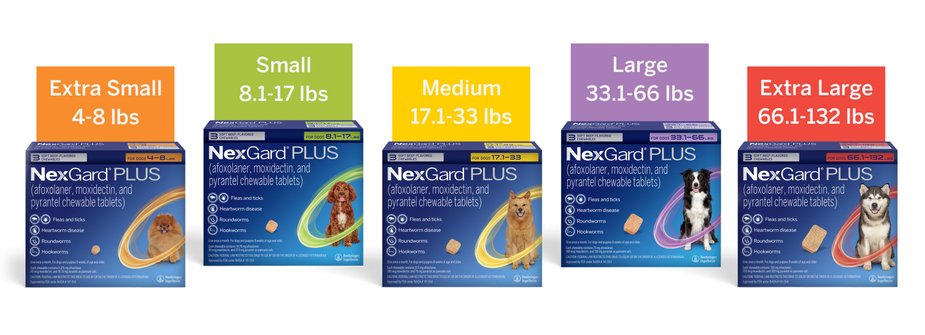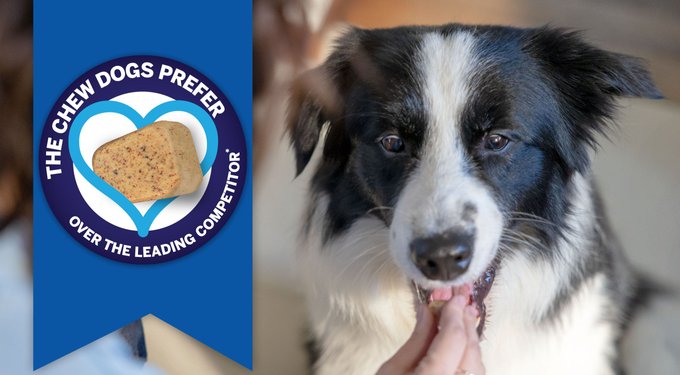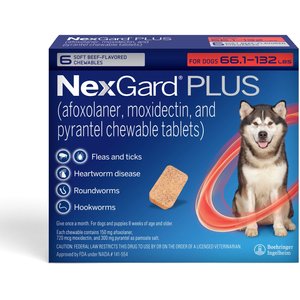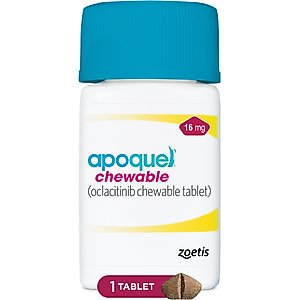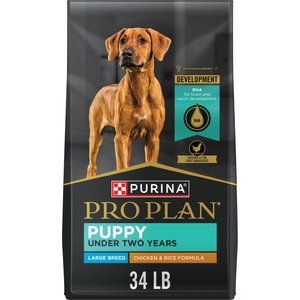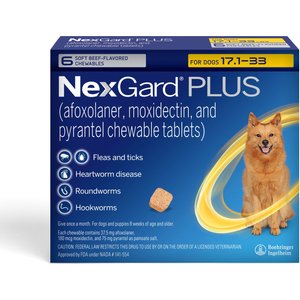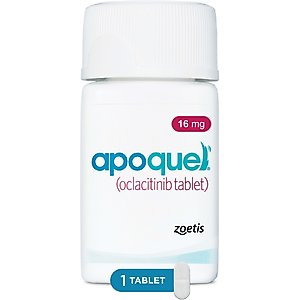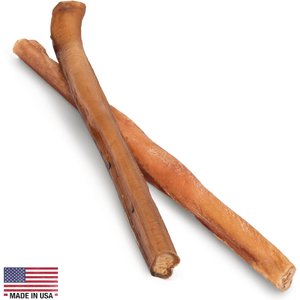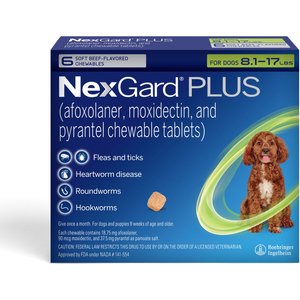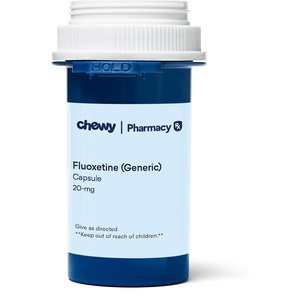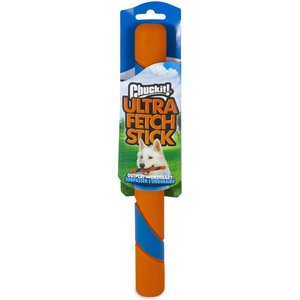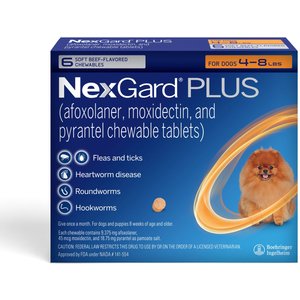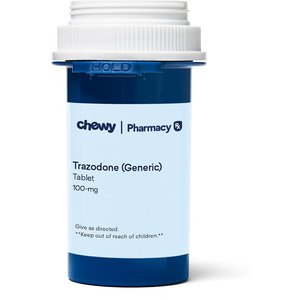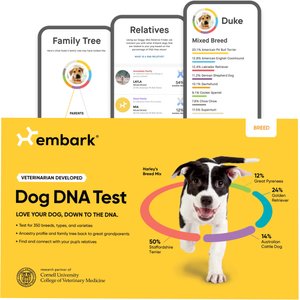How do I use NexGard® PLUS (afoxaloner, moxidectin, pyrantel chewable tablets) for Dogs?
NexGard® PLUS (afoxaloner, moxidectin, pyrantel chewable tablets) is used to protect your dog from fleas and ticks, PLUS heartworm disease, roundworms, and hookworms. NexGard® PLUS chews are available in a delicious, beef-flavored soft chew that makes monthly dosing a delight for your dogs. For each monthly dose, a chew can be given with or without food. See the product label for full dosing instructions, and always check with your vet regarding their recommendations for your pet.
How fast do NexGard® PLUS chews work?
NexGard® PLUS chews kill fleas fast before they can lay eggs. In a well-controlled laboratory study, afoxolaner alone began to kill fleas 4 hours after initial administration and was >99% effective at 8 hours. NexGard® PLUS chews provide powerful protection against fleas and ticks for a full month.
NexGard® PLUS chews work to prevent heartworm disease by killing any heartworm larvae that were acquired in the previous month. That’s why it is so important for your dog to receive the appropriate dose of NexGard® PLUS chews every month, year-round.
The pyrantel in NexGard® PLUS chews is a dewormer that treats and controls 3 species of hookworms and 2 species of roundworms.
Why am I still seeing fleas on my dog after using NexGard® PLUS chewable tablets?
You are likely seeing NEW fleas on your pet, which are jumping on your dog as it moves through infested areas. These fleas will be killed quickly by NexGard® PLUS chews before they can reproduce. Depending on the severity of an already existing infestation, you may continue to see new fleas jumping on your pet for three months or more (depending on environmental conditions). To prevent new infestations, continue to give NexGard® PLUS chews MONTHLY throughout the year.
Adult fleas – the ones that you see on an infested pet – make up only ~5% of the total flea population. The developing stages (flea eggs, larvae, and pupae) make up the other ~95%. These developing stages can be found anywhere an infested animal spends time. Commonly infested animals, which spread flea eggs throughout their surroundings, include untreated pets, feral cats, opossums, raccoons, coyotes, etc.1
Is there a weight or age requirement to give my dog NexGard® PLUS chews?
NexGard® PLUS chews are safe for dogs and puppies as young as 8 weeks.
How long does a dose of NexGard® PLUS chewable tablets last & how often should I treat my dog?
NexGard® PLUS chews provide powerful protection against fleas and ticks for a full month. Each monthly chew works to prevent heartworm disease by killing any heartworm larvae that were acquired in the previous month. It’s important to ensure that your dog receives a monthly NexGard® PLUS chew year-round to keep your dog protected against fleas, ticks, and heartworm disease.
Can I start treating my dog with NexGard® PLUS chewables at any time during the year?
Treatment with NexGard® PLUS chews may begin at any time of the year. It is recommended to treat your dog month after month, year-round no matter the season.
Do NexGard® PLUS chews need to be used even if I have an “indoor dog"?
Yes – it’s a common misconception that indoor pets aren’t exposed to parasites.
Fleas are opportunists. Even if your dog only goes outside to do their business, they’re at risk of infestations from fleas and ticks. Fleas can even “hitchhike" into a home on people, and then jump to infest dogs. An infested pet will spread flea eggs throughout the house, which can survive in your carpet or the crannies of your wood floors and then mature to infest other animals in your home.
Heartworms are transmitted by mosquitoes. It only takes one mosquito bite to transmit heartworms to your dog – so dogs can be exposed in a very short amount of time. And unfortunately, mosquitoes commonly make their way indoors in search of hosts. Even indoors, pets aren’t safe from the threat.
Are NexGard® PLUS chews safe?
NexGard® PLUS chewable tablets are both effective and safe. NexGard® PLUS chews have been evaluated extensively in both laboratory clinical studies, as well as in a field trial in pet dogs. NexGard® PLUS chews are safe for use in all breeds of dogs. And it’s approved and safe for use in dogs and puppies 8 weeks of age and older. The most frequently reported adverse reactions reported in clinical trials were diarrhea, vomiting, lethargy, and itching. NexGard® PLUS chews contains afoxolaner, a member of the isoxazoline class, which has been associated with neurologic adverse reactions including tremors, ataxia, and seizures in dogs with or without a history of seizures. Use with caution in dogs with a history of seizures or neurological disorders.
Can NexGard® PLUS chews be cut in half?
NexGard® PLUS chews should not be cut in half, as each NexGard® PLUS chewable is designed to provide the correct dose for a dog within a specific weight range. The soft chewables are not designed to be cut in half or split.
How do I give NexGard® PLUS chewable tablets to my dog, and what do I do if they spit it up?
NexGard® PLUS chews can be administered with or without food. Care should be taken to ensure that the dog consumes the complete dose, and that part of the dose is not lost or refused. If a dose is missed, administer a NexGard® PLUS chew and resume a monthly dosing schedule. If your dog does not consume the entire dose, please consult your veterinarian.
What sizes and options are NexGard® PLUS chews available for purchase?
NexGard® PLUS chews are available in packs containing either one, three or six beef-flavored chewables and comes in 4 different sizes for (Small 8.1-17 pounds) (Medium 17.1-33 pounds), (Large 33.1-66 pounds) and (Extra Large 66.1-132 pounds) dogs.
Can NexGard® PLUS chews be used for cats or other animals?
No, NexGard® PLUS chews should only be used for dogs. Do not give NexGard® PLUS chews to cats or other animals.
Can NexGard® PLUS chews be used in breeding, pregnant or lactating dogs?
The safe use of NexGard® PLUS chews in breeding, pregnant or lactating dogs has not been evaluated.
Are NexGard® PLUS chews safe for puppies?
NexGard® PLUS chews are safe for puppies 8 weeks and older.
Can NexGard® PLUS chews be used with other medications?
In a well-controlled field study, NexGard® PLUS chews were used concurrently with other medications such as vaccines, antibiotics, non-steroidal anti-inflammatory drugs (NSAIDs), anesthetics, sedatives, analgesics, steroids, anthelmintics, antiemetics, and antipruritics. No adverse reactions were associated with the concurrent use of NexGard® PLUS and other medications.
How do dogs get Hookworms and Roundworms?
Roundworms are extremely common in young dogs, infecting over 90% of 2. It’s very common for mothers to pass roundworms to their puppies prior to birth or even while the puppies are nursing. Both puppies and adult dogs may also contract roundworms by ingesting roundworm eggs from their environment, while grooming, or by eating infected animals.
Hookworm larvae can be transmitted through the skin or by ingesting larvae in contaminated soil or grass in your dog’s environment. Dogs may also contract hookworms by eating other infected animals—usually rodents. Puppies can also be infected if they ingest hookworm larvae while nursing.
What is heartworm disease?
Heartworm disease is an invisible, but potentially fatal threat that occurs in dogs and other animals. Heartworms (Dirofilaria immitis) are parasitic worms that are transmitted to dogs by infected mosquitoes. Microscopic larvae of heartworms develop and grow under the skin, then migrate to the blood vessels of the heart and lungs of the infected animal where they rapidly grow, becoming adults that are 5-12 inches in length.3
How do dogs get heartworms?
Dogs get heartworms by being bitten by an infected mosquito. Larvae are deposited on the skin when the infected mosquito bites, then when the infected mosquito leaves, the heartworm larvae enter through the bite wound. One bite is all it takes.4
What are the signs of Heartworm disease?
Not all dogs develop noticeable symptoms. While blood tests performed by your veterinarian are the best way to confirm a diagnosis of heartworm disease in dogs, here are five warning signs that are reported in dogs with advanced heartworm disease:
- A persistent, dry cough is a common sign seen in dogs with heartworm disease.
- Lethargy and reluctance to exercise are also common signs described in dogs with heartworm disease.
- Some dogs have a decreased appetite and, as a result, lose weight.
- As heartworm disease progresses, it can lead to heart failure. You may notice that your dog's belly appears swollen from fluid in the abdomen.
- In the most advanced cases, dogs can develop more severe respiratory issues like rapid breathing in addition to coughing.
How can I reduce the risk of heartworm disease in my dog?
There are 3 things you can do to help reduce the risk of heartworm disease.
- Reduce mosquito exposure by eliminating standing water where mosquitoes can breed, avoid known mosquito habitats, and limit outdoor exposure during peak mosquito feeding times.4
- Use heartworm disease preventives, like monthly NexGard® PLUS chewables, on a year-round basis to safely and effectively prevent heartworm disease by affecting the heartworm larvae before they can grow into dangerous adult heartworms.
- Get Your Dog Tested Every Year. Before getting a prescription for a heartworm disease preventive, your dog should be tested for heartworms. Talk to your vet about testing options.
Can heartworm disease be treated?
Yes, it can be treated, but heartworm disease is a serious condition that can cause heart failure, permanent damage to your pet's lungs, and even death. Treating heartworm disease is costly and complicated.3,5
What is the best number to call regarding any specific product questions?
For any specific product questions, please call Boehringer Ingelheim Animal Health at 1-888-637-4251.
References
- Dryden M. Biology of fleas of dogs and cats. Compend Contin Educ Vet. 1993(4):569-579.
- Ascarid for Dog. Companion Animal Parasite Council https://capcvet.org/guidelines/ascarid/. Accessed May 15, 2023
- Heartworm Basics. American Heartworm Society. https://www.heartwormsociety.org/pet-owner-resources/heartworm-basics. Accessed September 14, 2021.
- Current Canine Guidelines for the Prevention, Diagnosis, and Management of Heartworm Infections in Dogs 2018. American Heartworm Society. https://www.heartwormsociety.org/images/pdf/2018-AHS-Canine-Guidelines.pdf. Accessed Sept 14,2021.
- Weigh the Costs Infographic. American Heartworm Society. https://d3ft8sckhnqim2.cloudfront.net/images/infographics/0010-weigh-the-costs.jpg. Accessed September 14, 2021
NexGard® is a registered trademark of Boehringer Ingelheim Animal Health France, used under license. HEARTGARD® is a registered trademark of Boehringer Ingelheim Animal Health USA Inc. All other trademarks are the property of their respective owner. © 2023 Boehringer Ingelheim Animal Health USA Inc., Duluth, GA. All rights reserved. US-PET-0020-2023
Keep saving 5% on every order
Never miss a dose with easy refills
Skip, change, or cancel anytime

